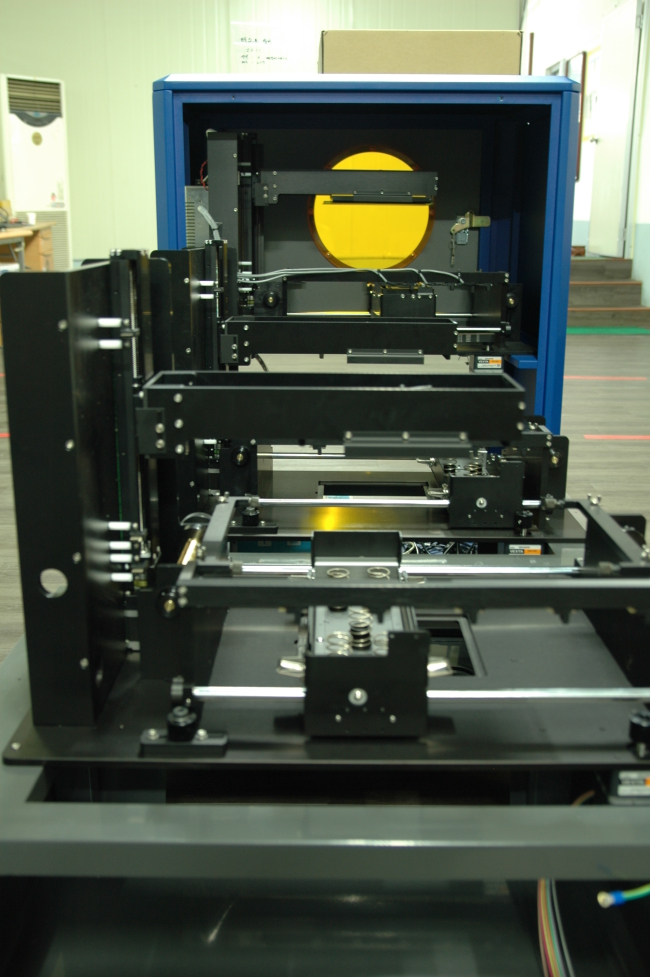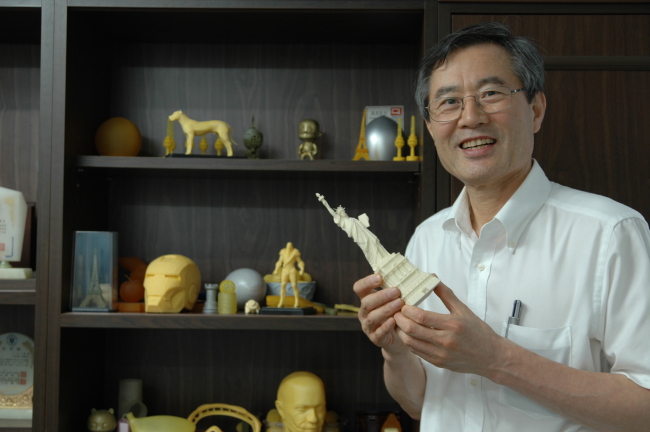 |
Carima’s flagship 3-D printer Master Plus. (Carima) |
Though still fledgling, the 3-D printing business is garnering much attention from business and even political circles.
U.S. President Barack Obama said 3-D printing had the potential “to revolutionize the way we make almost everything” in his State of the Union speech in February, and his administration has pledged to invest in the cutting-edge industry.
Having sensed a promising future for the industry six years ago, a pioneering Korean 3-D printer manufacturer is now aiming to penetrate the world market dominated by U.S., European and Japanese firms.
“I would not sell the firm to a huge conglomerate such as Samsung Electronics or LG Electronics, which are showing interest in the 3-D printing business,” said Lee Byung-keuk, CEO of Korea’s leading 3-D printer maker Carima, in a recent interview with The Korea Herald.
 |
Carima CEO Lee Byung-keuk holds a miniature of Statue of Liberty manufactured by the company’s 3-D printer Master Plus. (Carima) |
“My goal is to manage the firm to become competitive enough to issue an initial public offering, which requires around 10 billion won ($9 million) in total assets,” said Lee, showing off a miniature model Joseon-era (1392-1910)turtle ship made with one of his printers.
The domestic electronics giants he mentioned, seeing the opportunities in the fledgling industry, made proposals to form a partnership with his firm to make a printer, according to the CEO.
The industry’s potential extends from the medical to automotive and aerospace industries.
“When traveling to the moon or Mars in the future, the only thing we’ll need is a 3-D printer and materials. You won’t need to bring all the utensils for cooking,” Lee said.
Lee, whose firm formerly manufactured photo-printing machines from the 1980s to the early 1990s, showed confidence in the firm’s technological advancement and the bright future of the market.
After losing its ground to Chinese photo-printing companies, he sold the assembly lines for the printing machines and shifted his investments of more than 10 billion won into developing a 3-D printer.
His firm developed its first 3-D printer, Master, around six years ago, and produced its successor Master Plus in 2010.
His firm’s production speed is twice as efficient as those of foreign rivals, Lee claimed, attributing it to the relentless efforts his workers and researchers have made.
Its flagship 3-D printer Master Plus is priced at 30 million won.
The firm’s flagship 3-D printer Master Plus is based on a prototype technology called stereolithography apparatus, or SLA, which uses an ultraviolet laser and a vat of liquid ultraviolet-curable photopolymer resin to build a cross section of a product model layer by layer.
According to Lee, the firm has so far raked in 5 billion won, recording a yearly sales profit of 1 billion won.
Regarding the issues of infringement of intellectual property, and hand guns and rifles made with 3-D printers, he said “there is need for strict punishment against those who manipulate the technology with ill intent,” but emphasized that technology development “cannot be deterred because of those few.”
By Kim Young-won (
wone0102@heraldcorp.com)







![[Exclusive] Hyundai Mobis eyes closer ties with BYD](http://res.heraldm.com/phpwas/restmb_idxmake.php?idx=644&simg=/content/image/2024/11/25/20241125050044_0.jpg)
![[Herald Review] 'Gangnam B-Side' combines social realism with masterful suspense, performance](http://res.heraldm.com/phpwas/restmb_idxmake.php?idx=644&simg=/content/image/2024/11/25/20241125050072_0.jpg)
